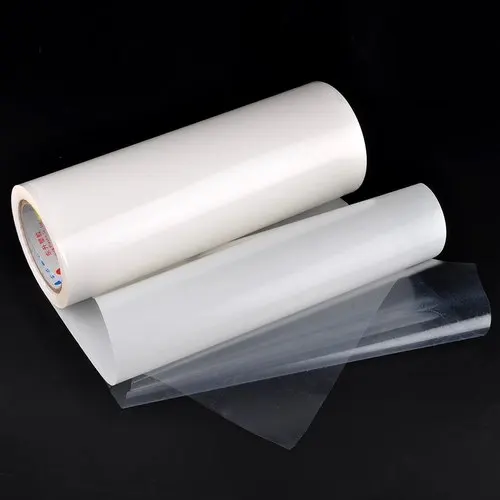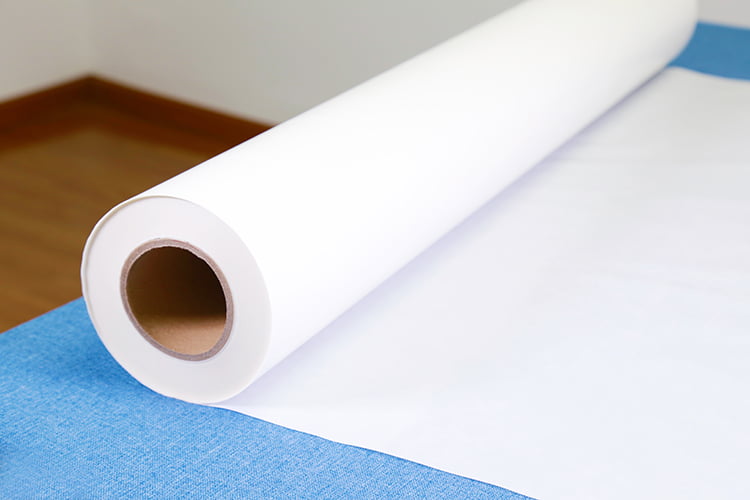When talking about a certain type of glue, people often refer to it as "hot melt adhesive. " This kind of glue, when heated, turns into a liquid and takes on the consistency of a liquid. It most frequently manifests itself as flakes, granules, or rods in appearance. Granules and rods are two additional potential forms. A hot melt glue gun or a hot melt machine is used to first heat and melt it, and then it is applied to the surface that is going to be bonded after it has been prepared in this manner. It has the potential to form a powerful bond combine when it is at room temperature and beginning to solidify. This is when the conditions are optimal. This will take place once it has reached the temperature of the surrounding air. They have a high level of rigidity when they are in their solid pes hot melt double sided adhesive lining state, but when they are melted, they have a high level of viscosity. When they are in their solid state, they have a high level of rigidity. As a direct result of this, it is suitable for use in the restoration of a wide range of different materials, such as paper, wood, plastic, metal, ceramics, and many others besides. Furthermore, it is frequently used in the production of manufactured goods in addition to industrial goods. High-temperature hot-melt glue sticks are a type of the hot-melt glue stick that falls under the category of hot-melt glue sticks.
Sticks of high temperature hot melt adhesive have a melting point and softening point that are both higher than those of regular hot melt adhesives. This enables them to function effectively at temperatures that are higher than those at which regular hot melt adhesives are effective.
Hot-melt glue sticks used at high temperatures typically contain a wide variety of polymers, resins, and additives. All of these constituents play a role in the formulation of the glue, which ultimately leads to the glue having its own set of distinctive chemical and physical properties. The particulars of the application as well as the qualities of the component that needs to be bonded are factors that go into determining which of the potential solutions will ultimately be selected. If you are unable to demonstrate an understanding of the necessary bonding requirements and materials, you will not be able to achieve the best possible results.
Sticks of high-temperature hot-melt glue are one of the most common types of adhesives used in the manufacturing process eva web adhesive of industrial goods; however, it is unavoidable that these glue sticks will fail to adhere when they are being applied. This is one of the most common types of adhesives used in the manufacturing process of industrial goods. When it comes to the production of industrial goods, this kind of adhesive is among the most common types used in the process. As a consequence of this, the editor has arrived at the conclusion that the components that contribute to stickiness can be split up into the three groups that are described in the following paragraphs:.
1. Viscosity is a factor that has an effect on a wide variety of properties, including, but not limited to, fluidity, permeability, spraying performance, glue temperature, drawing, and glue output, to name just a few of them.The temperature at which the glue is applied, the degree to which it can withstand heat, the rate at which it hardens, and a number of its other properties are all influenced by the softening point.The open time of the product has an effect on the operational applicability of the product, as well as the permeability and bond strength of the product.There is a link between the amount of bonding that takes place and the affinity between the two parties.
6. 7. 8. Substrate.
1. Polarity: The polarities are attracted to one another, and the bonding effect is enhanced when the polarity of the glue and the substrate are comparable to one another.Sanding and applying a corona treatment are two effective methods that can be used to improve bonding.The object's surface temperature is being measured.If the surface temperature of the base material is too low, the infiltration of the glue, the opening time of the glue, and the penetration of the glue will all be negatively impacted because of this.If the temperature is kept too high throughout the curing process, it will take a great deal longer.
6. eva hot melt adhesive web Equipment and process.
1. Velocity: High-speed production lines typically have the effect of reducing the requirements for opening time, while typically increasing the requirements for curing speed.Opening distance:The opening time of the equipment should be less than the opening time of the hot melt adhesive. Opening time of the equipment should be equal to opening distance divided by production line speed.Opening distance.The opening time of an piece of equipment is equal to the opening distance divided by the speed of the production line.3. The opening distance, which, when divided by the speed of the production line, equals the amount of time it takes for the equipment to fully open up to its maximum potential.Pressure: It is necessary to apply the right amount of pressure in order to assist the hot melt adhesive in penetrating, infiltrating, and solidifying the material. This is accomplished through the application of pressure.Holding time: The apparatus should be built in such a way that the holding time is longer than the time it takes for the hot melt adhesive to cure. This is because the holding time is more important than the curing time.
6.

What is the most notable distinction between the melting point and the softening point in terms of hot melt adhesives, and why is this distinction important?These two things are distinct from one another in the ways that are detailed in the list that follows, which is as follows:In the industry, the term "softening point" refers to the temperature at which the hot-melt adhesive begins to become more malleable. This temperature is measured in degrees Celsius. This temperature is also known as the temperature at which glass moves from its liquid state into its solid state. As soon as the temperature rises above the point at which the hot melt adhesive starts to soften, it is capable of changing into a liquid state and flowing more easily. This occurs when the temperature rises above eva hot melt adhesive web the point at which it begins to soften. This happens when the temperature rises above the point at which it starts to soften, and continues to rise above that point.

The point at which the hot melt adhesive completely liquefies and turns into a liquid is referred to as the melting point of the adhesive. When the temperature reaches the point where it will melt, the hot melt adhesive will turn completely liquid and will have melted completely. This will occur when it reaches the point where it will melt. When it reaches the temperature at which it can melt, this is what will happen. These two factors are utilized quite frequently in the process of selecting and applying hot melt adhesives in the context of industry and manufacturing. The process is referred to as "hot melt adhesives. "This step is included in the process of manufacturing and processing hot melt adhesives. Its purpose is to ensure that the final products have physical properties that are on par with the specifications that were established for those properties.




